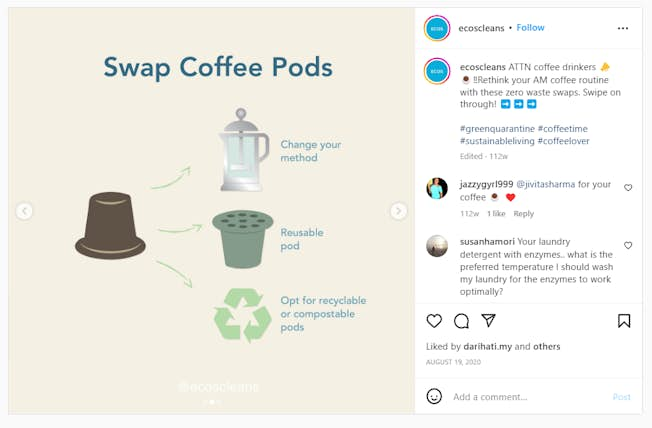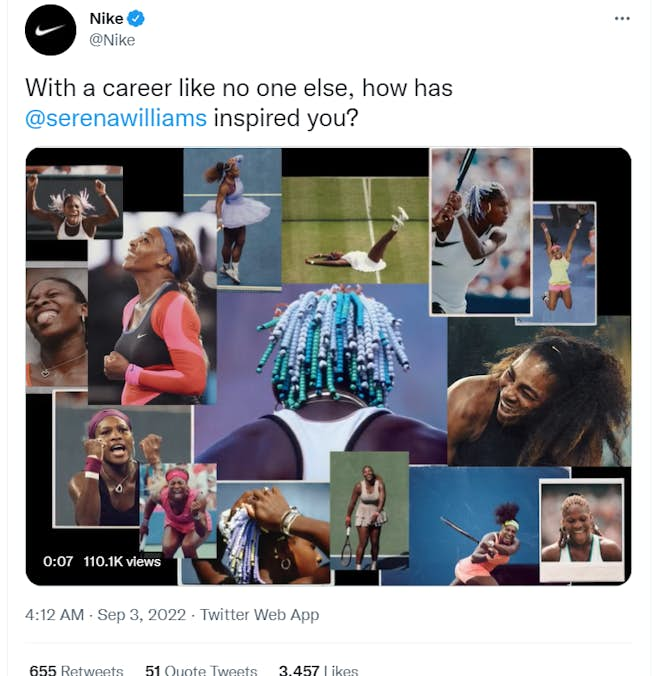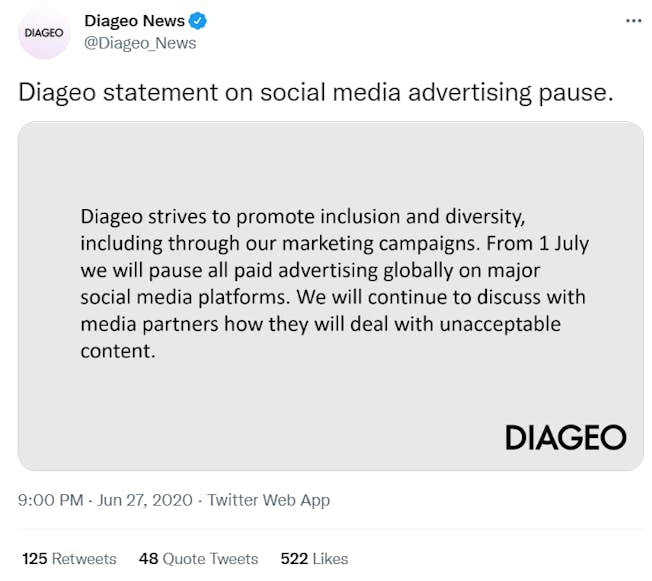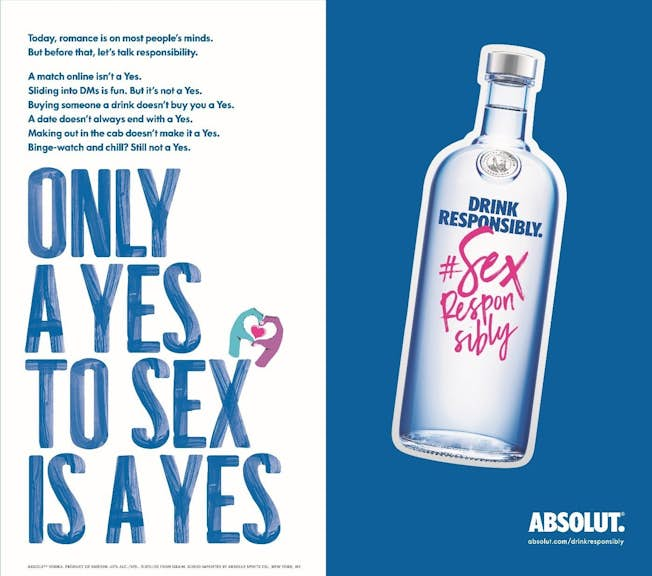Oct 31, 2022
8 Ways To Promote Corporate Social Responsibility On Social Media
There has been an awakening among consumers when it comes to purchasing products and services. Customers now actively seek out brands that support the causes they believe in and take an active role in driving societal or environmental change.
This is the reason companies need to invest in Corporate Social Responsibility (CSR). It not only drives people to connect with their brand but helps create a competitive advantage in the marketplace.
With over 4.2 billion users worldwide (projected to grow to 6 billion by 2027 according to Statista), social media is an effective platform to promote and engage people in CSR efforts.
In this guide, we’ll help you promote your CSR programs and efforts on social media to boost engagement, expand reach, and empower your customers.
1) Encourage action and reaction
Promoting your CSR programs on social media channels is a great way to let the public know what you stand for. However, it’s not enough to just post and leave. You need to engage with your social media followers and encourage them to take action, or at least have a reaction.
For example, if you post about a new initiative to reduce your company’s carbon footprint - prompt engagement. Ask what other suggestions people have to expand the program or invite followers to a webinar on sustainability.
Take ECOS, an eco-cleaning product company that focuses on sustainability and the environment. This Instagram carousel they made incites people to try out sustainable coffee swaps. It’s not only interactive, in asking people to swipe, but offers simple and actionable advice to protect the environment.

Read more about the amazing influencer-led viral success of #TeamTrees
“70% of consumers want to know what the brands they support are doing to address social and environmental issues and 46% pay close attention to a brand’s social responsibility efforts when they buy a product” Markstein & Certus Insights
2) Be consistent but not overbearing
It’s important to keep a focus on your CSR commitments, but don’t flood your social media feeds with just that type of content.
It may come across as salesy, pushy, or overbearing to a prospect or customer. However, if you say too little it may seem like you don’t care about your commitments.
A mix of content is always good in your social media feed. The key is to keep your ethos and values in mind for every post on your social channels.
Take Nike as an example. With so much content and ground that you can cover in terms of topics or issues, the company puts its values front and center which is obvious from this iteration of its Twitter profile.

With two hashtags in their profile supporting black rights and advocating for the cessation of Asian hate, it’s obvious where their focus lies. But their Twitter feed is full of content that both entertains and is diverse, supporting sports people, promoting new products and looking back at moments in sporting history, never forgetting their commitment to CSR. Here’s a tribute to Serena Williams after her final tennis match, which includes a prompt for followers to share their stories.

Read more about how Nike always stays ahead of the curve.
3) Be an advocate for change
With a CSR program, it’s important to be focused. Just because something is trending on social media doesn’t mean you should link your CSR issues to it. However, there are times when it is important to take action and be vocal about issues that matter to your industry and can harm society.
In 2020, a #StopHateforProfit movement was started by social justice groups urging companies to boycott Facebook (and other social media channels) for one month due to its inaction on hate speech and misinformation.
At first many of the companies that took part were small, but larger brands also signed up such as BestBuy, North Face, Diageo, Walgreens, and Adidas.

This boycott sent a message and resulted in Meta implementing several actions including the hiring of their first VP of Civil Rights and civil rights training for employees.
If an issue is important to your industry or the public, think about how you can respond. It could be as simple as donating to a fund or signing a petition and encouraging your followers to do the same.
Read more: look at this example for caring about Earth Day to get an idea of what you can do.
4) Use storytelling
Storytelling is an important part of your corporate social responsibility initiatives. You need to weave a narrative so people can relate to it and are eager to learn more on your social media channels.
For example, posting about your partnership with a local charity may not get people clicking. However, if you post a testimonial of a person or family that will be positively impacted by your contribution, it’s more likely to prompt action and reaction.
Cookie brand Oreo is no stranger to creating a buzz on social media with its marketing activities. Remember its post ‘you can still dunk in the dark’ that went viral in response to the power cut at the 2013 Superbowl?
In 2020 Oreo launched a partnership with PFLAG to create #ProudParent, an initiative designed to shine a spotlight on the powerful impact love and acceptance can have on LGBTQ+ youth.
This campaign is to “empower and inspire parents, families, and allies to come out in loud, public support” in line with Oreo’s ‘bringing families together’ ethos. The video already has over 1.1 million views on YouTube and got traction on Twitter with their ‘Pride packs’ of cookies.
This emotive campaign shows the power of storytelling to promote a brand’s beliefs and values. It promotes a partnership but keeps the focus on the issue.
Read more with some tips on how to use social media for storytelling.
5) Humanize your brand
The perception of your brand should be enhanced by your CSR programs but you can also put a human face to the initiatives by shining a lens on your top executives or employees.
This links to the storytelling that we mentioned above. A story can come from an unlikely place, but if told well, it can deepen the public’s understanding of your brand and be used to your advantage.
Take the French alcohol company, Pernod Ricard. The company hired a new CEO of North America in 2020, Ann Mukherjee, who by her admittance was an unlikely choice for the top job at a company that sells alcohol.
In an interview with Fast Company, she revealed a difficult relationship with alcohol, having been assaulted by an inebriated man, and dealing with her mother’s death which was caused by a drunk driver.
While many C-suite leaders may be reluctant to share such personal details, Mukherjee’s experiences informed one of her first initiatives as CEO: a campaign (launched on Valentine’s Day) about consent for Absolut Vodka, one of Pernod Ricard’s flagship brands.

This campaign connects to Pernod’s sustainability CSR strategy as it ties into the value of the brand and highlights responsibility as one of their commitments under their ‘Responsible Hosting’ pillar - to fight alcohol misuse and promote responsible drinking.
You can find out more about ‘Influencing Change through Digital Channels: with Drinkaware’.
6) Curate content
Any CSR initiatives your company has adopted will also resonate with other companies and have far-reaching impacts. This means that there’s likely to be research or developments in areas like climate change that will appeal to your social media audience.
To cement your CSR initiatives, share third-party posts and information to highlight issues. This will not take away from your brand of CSR programs but, rather, show your dedication to a cause because you care, not because it drives clicks.
Outdoor clothing company Patagonia is well known for being a climate and environmental activist. Their social media feed not only features their content but also highlights groups or important events to reinforce its message like this one from the Native Organizers Alliance. The company was embraced by the public in 2022 when founder Yvon Chouinard said he was giving away the company to a charitable trust to fund efforts for climate change research.

7) Partner with a non-profit
While you can post endlessly about your CSR efforts on social media, customers want to see action. It’s about investing in these initiatives to promote and bring about positive change. An effective way to do that is to partner with or support a non-profit organization.
When choosing a non-profit, do not focus on the profile. It’s about the alliance of your company’s values with theirs, not how many followers they have or how well-known the brand is. Small and local organizations may be a better fit for a small to medium company and also may have more impact on the ground.
Outdoor clothing brand The North Face partnered with breast cancer organizations Boarding for Breast Cancer and Breast Cancer Prevention Partners for over fifteen years. The aim is to support their work for wellness and recovery in the outdoors.
The outdoor brand creates outdoor clothing that raises awareness but also funds. All items are pink-themed to reflect the breast cancer logo and the campaign includes breast cancer survivors like a climber, Louise Mousseau.

Listen to our podcast on marketing for nonprofits for tips and information.
8) Develop a social media crisis plan
When you are active on social issues, there’s always a chance, especially on social media, that reactions are not always positive.
That's why you need the plan to prepare for a social media crisis. In the face of public backlash or negativity, the response must be coordinated, aligned across platforms, and well thought through.
You need to have decided on a tone of voice, have access to content that can help form a reply and have a spokesperson that knows how to respond to media if required. Your response also needs to be quick but measured, do not wait too long to react as things may snowball.
“When it comes to social responsibility, consumers are looking for brands to show them – not just tell them – what they’re doing,” Sheila McLean, president of Markstein, mid-Atlantic said in a press release about recent research. “Navigating these expectations is not easy. Brands need a much deeper understanding of their customers’ values as they chart their own social responsibility course. They need to demonstrate real impact over time.”
Boost the profile of your business on social media
Social media networks offer access to a global audience to promote your brand and values. DMI’s Social Media Marketing course will help you to grow your business by understanding social research, social strategy, and social content. You will also learn the ins and outs of social media platforms including Facebook, LinkedIn, YouTube, Instagram, and TikTok. Get started today!
Related
Upgrade to Power Membership to continue
your access to thousands of articles, toolkits, podcasts, lessons and much much more.
Become a Power Member- Login
- View Courses
- - - -
- Courses
- Resources
- - - -
- My Account
- Change Password
- Logout






